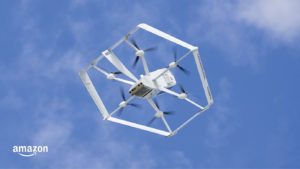 Amazon has announced that it will finally start an Amazon drone delivery project in the U.S., beginning in the small town of Lockeford, CA.
Amazon has announced that it will finally start an Amazon drone delivery project in the U.S., beginning in the small town of Lockeford, CA.
Continue reading below or listen:
The announcement comes more than 8 years after Amazon announced that it would pursue drone delivery, and the company has had an undeniable impact on the way that the application has developed. Throughout the development of multiple drone solutions, Amazon also sought patents for many innovative ideas for bringing inventory closer to consumers, charging delivery drones, landing logistics, and more.
Last Things First: Amazon Drone Delivery in California
The recent announcement states that residents within a 4 mile radius of an Amazon distribution center in Lockeford, CA will be eligible to sign up for Amazon’s drone delivery service, PrimeAir. “Once onboarded, customers in Lockeford will see Prime Air-eligible items on Amazon. They will place an order as they normally would and receive an estimated arrival time with a status tracker for their order,” says the announcement. “For these deliveries, the drone will fly to the designated delivery location, descend to the customer’s backyard, and hover at a safe height. It will then safely release the package and rise back up to altitude.”
An exact launch date for the program has not been specified at this time. Amazon is an FAA-certified Air Carrier, but the company is still working with the FAA to receive permissions to deliver in Lockeford.
The current version of Amazon’s delivery aircraft is pictured above: the company statement emphasizes the safety and built in detect-and-avoid technology designed to avoid collisions with other aircraft and ensure ground safety.
From 2013 – Today: the Patents, the Problems, and the Progress
As the first major retailer to announce that drone delivery was a goal, Amazon took an early seat in FAA discussions, drone industry shows, and advocacy. In 2013, there were few manufacturers building commercial grade delivery drones, and Amazon decided to build their own aircraft. DRONELIFE articles from 2014 indicate that Amazon started hiring drone pilots and ramping up their research and development center: by the end of 2014, Amazon had said that the FAA was “too restrictive” and announced that they were moving more of their drone development abroad.
In 2015, Amazon began testing in Canada, and received the first OK to test in the US. The company took out their first patent on Sense and Avoid technology to avoid collisions, and introduced their first publicly disclosed drone template – saying in May that they were ready to start delivery as soon as regulations allowed. In July of 2015, Amazon proposed their controversial idea of a federated airspace – giving delivery drones their own little slice of the sky in order to facilitate integration with manned aircraft.
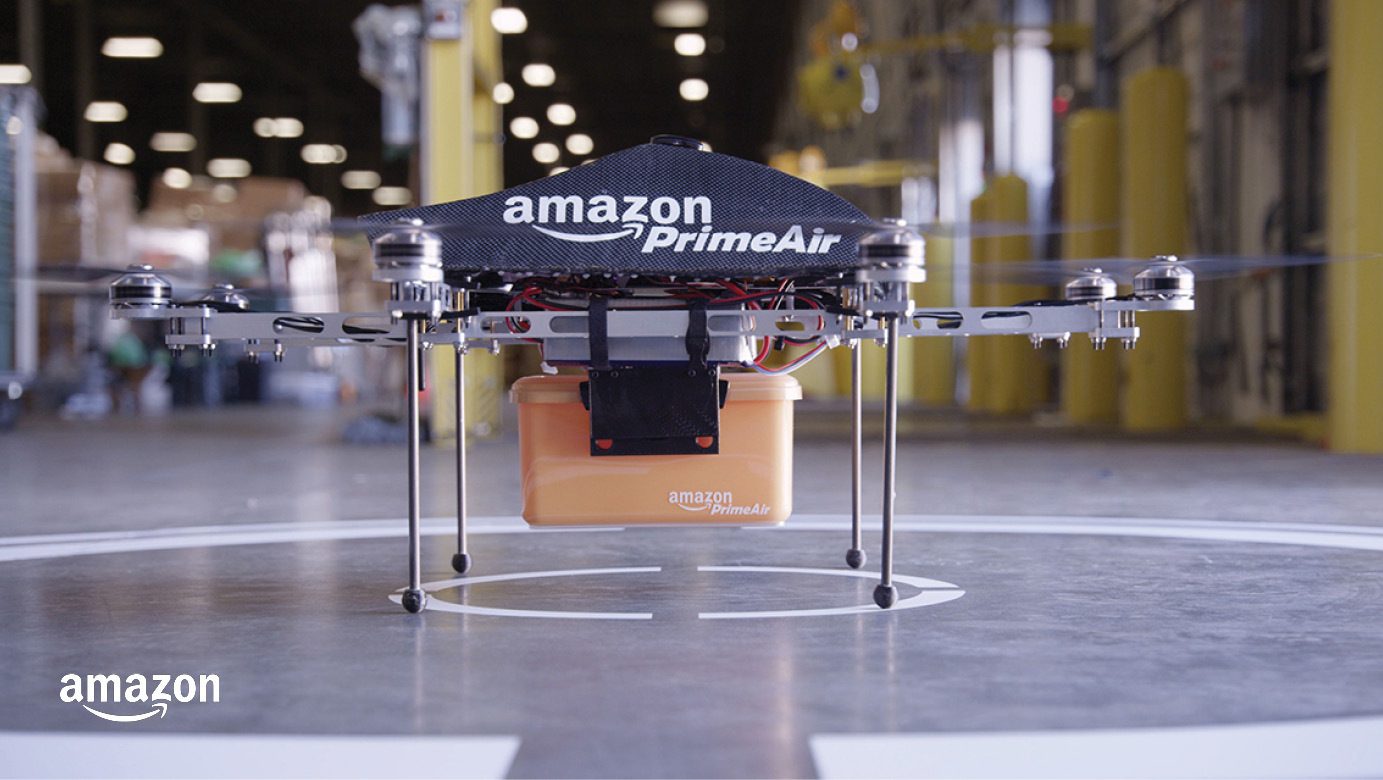
By the end of 2015, Amazon had released a second prototype model. At around that time, the Prime Air website said:
Amazon Prime Air is a future service that will deliver packages up to five pounds in 30 minutes or less using small drones … Flying under 400 feet and weighing less than 55 pounds, Prime Air vehicles will take advantage of sophisticated ‘sense and avoid’ technology, as well as a high degree of automation, to safely operate beyond the line of sight to distances of 10 miles or more.
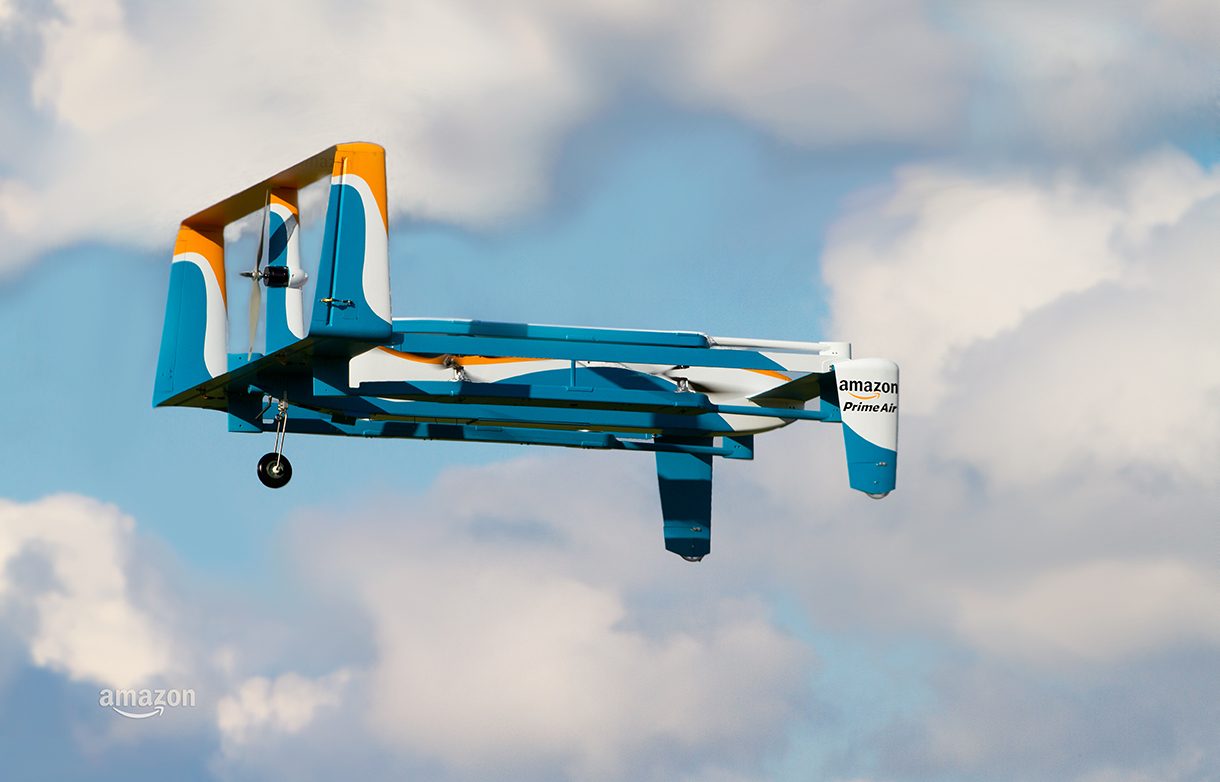
When 2016 started, Amazon’s leadership was clearly frustrated with the rate of regulation. In January, the VP of Global Public Policy Paul Misener said that “red tape was more difficult than technology.” By July, the company had announced that it’s Prime Air development would leave the US.
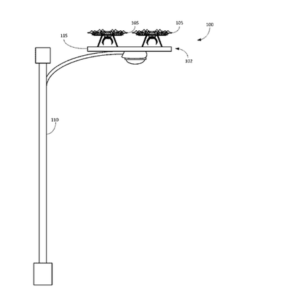 Also in 2016, Amazon launched many patents designed to address issues in drone delivery – some practical, and some yet to enter the mainstream. There were the “birdhouses“: docking stations for drones designed to extend their flight, which could be installed along a route on existing infrastructure like street lights. There was a patent described as drones “hitching rides” on trucks and ground vehicles to extend their range: and a fascinating idea for voice-controlled drones. There was a patent to protect delivery drones, and the “secret” patent for airborne, blimp-like warehouses that would bring Amazon’s inventory closer to its ever-expanding customer base.
Also in 2016, Amazon launched many patents designed to address issues in drone delivery – some practical, and some yet to enter the mainstream. There were the “birdhouses“: docking stations for drones designed to extend their flight, which could be installed along a route on existing infrastructure like street lights. There was a patent described as drones “hitching rides” on trucks and ground vehicles to extend their range: and a fascinating idea for voice-controlled drones. There was a patent to protect delivery drones, and the “secret” patent for airborne, blimp-like warehouses that would bring Amazon’s inventory closer to its ever-expanding customer base.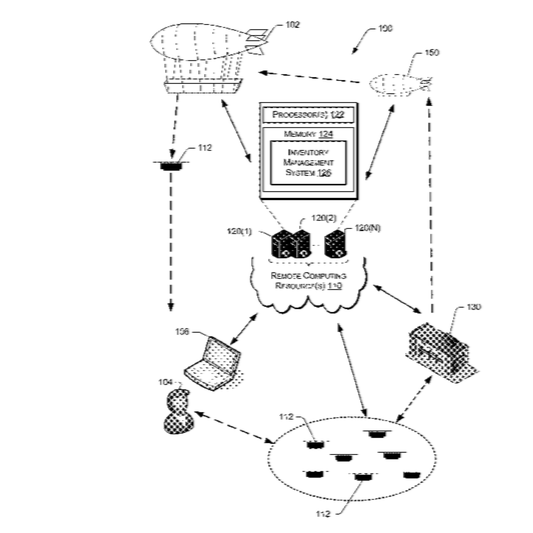
2017 saw even more patents: a virtual drone safety shroud, a folding wing drone design, drone delivery infrastructure, the idea of “launching” packages for delivery, and more. Amazon demonstrated their drone delivery program at SXSW that year, and described a landing system that involved a small “welcome mat” that homeowners would set out in their yard to facilitate drone delivery. At the end of the year, DRONELIFE reported on an Amazon patent for their drones to “self-destruct” in case of emergency.
By 2018, however, the momentum had slowed. DRONELIFE published an article by drone analyst Colin Snow explaining why Amazon hadn’t implemented drone delivery yet. But in 2019, a drone looking like the current design was on display at Amazon’s re:MARS 2019 conference, and the company released a video of the delivery drone in action.
In 2020, Prime Air leader Gur Kimchi was replaced by ex-Boeing Exec David Carbon: and in August of that year Amazon finally won FAA approval for the Prime Air fleet. While Wired Magazine reported in 2021 that the Prime Air project was in disarray and at risk of failure, 2021 also saw Amazon join the FAA’s Drone Advisory Committee, demonstrating their continued committment to the drone industry.
If 2022 sees Prime Air finally take flight, it will be a victory for the company which faced the almost impossible task of being a first mover in a brand new industry. In 2013 when Jeff Bezos introduced the concept of drone delivery on an episode of 60 Minutes, the idea seemed far-fetched. Now, it simply seems like the logical extension of a vast home delivery logistics network common all over the country. From the June, 2022 Amazon announcement:
Since the inception of Prime Air, we have designed, built, and tested many drones. In fact, we’ve created more than two dozen prototypes…
It took years of inventing, testing, and improving to develop these breakthrough technologies, and we’re excited to use them to make customer deliveries.
Miriam McNabb is the Editor-in-Chief of DRONELIFE and CEO of JobForDrones, a professional drone services marketplace, and a fascinated observer of the emerging drone industry and the regulatory environment for drones. Miriam has penned over 3,000 articles focused on the commercial drone space and is an international speaker and recognized figure in the industry. Miriam has a degree from the University of Chicago and over 20 years of experience in high tech sales and marketing for new technologies.
For drone industry consulting or writing, Email Miriam.
TWITTER:@spaldingbarker
Subscribe to DroneLife here.
https://dronelife.com/2022/06/20/amazon-drone-delivery-a-brief-history-of-the-patents-problems-and-progress-from-the-dronelife-archives/
 Unmanned Aerial Vehicle The latest drone news
Unmanned Aerial Vehicle The latest drone news



